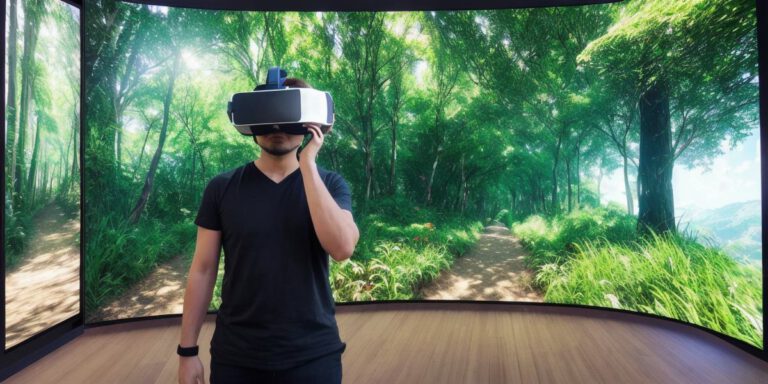Virtual Reality Development: Features, Popularity, and Future Developments

Virtual reality (VR) technology has been advancing rapidly in recent years, and it’s no surprise that developers are eager to learn about its features, popularity, and future developments. In this article, we will explore the ins and outs of VR development, including the latest trends, best practices, and opportunities for growth.
Features of Virtual Reality Development
Virtual reality technology is all about immersing users in a simulated environment that feels as real as possible. Here are some key features to keep in mind when developing virtual reality experiences:
- Realistic graphics and sound effects: To create an immersive experience, developers must pay attention to the visual and auditory aspects of their creations. This includes high-quality graphics, 3D models, and realistic sound effects that add to the overall atmosphere.
- Motion tracking: VR experiences require accurate motion tracking to ensure that users’ movements are properly translated into the virtual world. Developers must use specialized hardware and software to track users’ movements and adjust the environment accordingly.
- Interactivity: Users expect virtual reality experiences to be interactive, allowing them to explore and interact with the environment in a meaningful way. Developers must incorporate intuitive controls and interactions that make the experience engaging and fun.
- Comfort and safety: VR technology can be disorienting, so developers must ensure that their experiences are comfortable and safe for users. This includes minimizing motion sickness, providing adequate lighting and ventilation, and implementing safety features such as handrails or harnesses.
Popularity of Virtual Reality Development
Virtual reality technology has been gaining popularity in recent years, thanks to advancements in hardware and software, as well as increasing demand from consumers. Here are some key trends and statistics to keep in mind:
- Growing market size: The virtual reality market is expected to reach $67.3 billion by 2025, up from $8.7 billion in 2020. This growth is driven by increasing demand for immersive experiences across a range of industries, including gaming, education, healthcare, and tourism.
- Increasing adoption: Virtual reality technology is becoming more accessible and affordable, with consumer-grade VR headsets such as the Oculus Quest 2 selling for as little as $299. This has led to increasing adoption rates, with millions of users worldwide now experiencing virtual reality for the first time.
- Rising innovation: The virtual reality industry is seeing rapid innovation and development, with new technologies and applications emerging all the time. For example, haptic technology allows users to feel physical sensations in the virtual world, while eye-tracking technology enables more natural interactions with the environment.
Future Developments of Virtual Reality Development
As virtual reality technology continues to advance, developers can expect to see new and exciting developments that will shape the future of VR. Here are some key areas to watch:
- Augmented reality integration: Augmented reality (AR) technology, which overlays digital content onto the real world, is expected to play an increasingly important role in virtual reality development. For example, AR could be used to enhance the virtual environment with real-world objects or data, making for a more seamless and immersive experience.
- Wireless VR headsets: As technology advances, we can expect to see wireless VR headsets that offer greater freedom of movement and a more natural experience. This will allow users to explore the virtual world without the constraints of cables or wires.
- Improved haptic feedback: Haptic technology, which allows users to feel physical sensations in the virtual world, is expected to see significant advancements in the coming years. This could include more advanced haptic gloves or vests that provide a more realistic sense of touch.
- New applications: Virtual reality technology is being explored across a range of industries, from education and healthcare to tourism and entertainment. As developers continue to explore these new applications, we can expect to see virtual reality experiences that are even more immersive and engaging.

Conclusion
Virtual reality development is an exciting and rapidly evolving field that offers endless opportunities for innovation and growth








